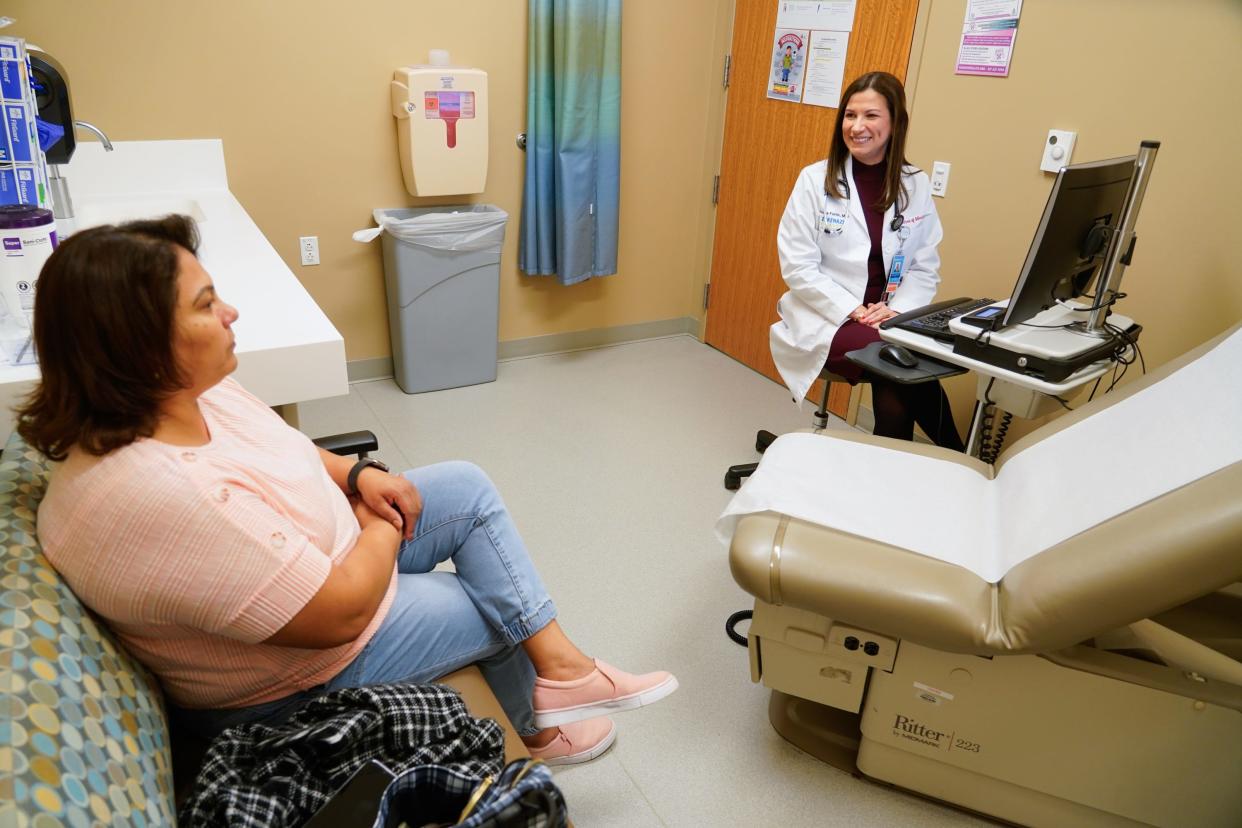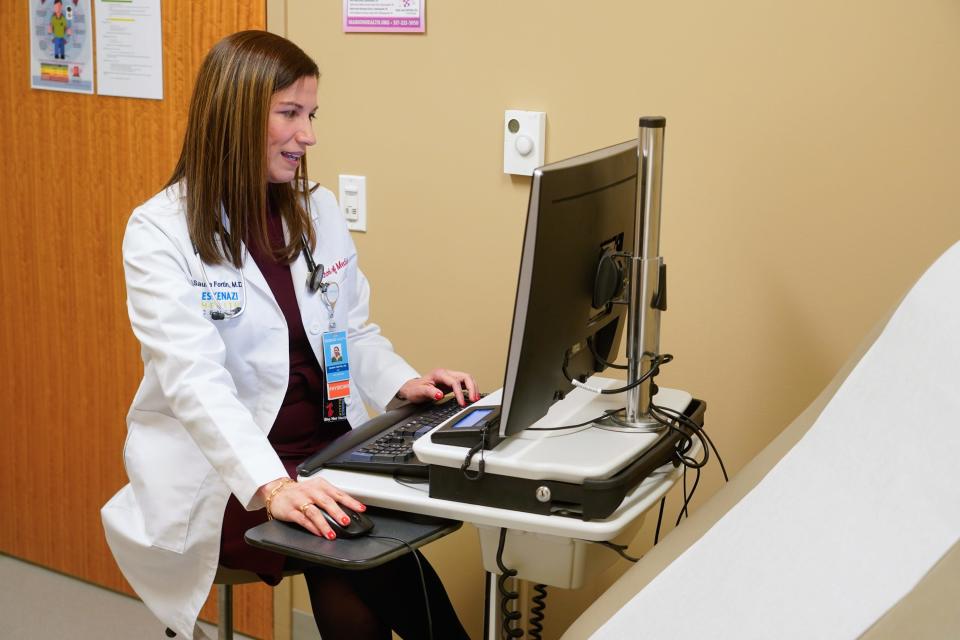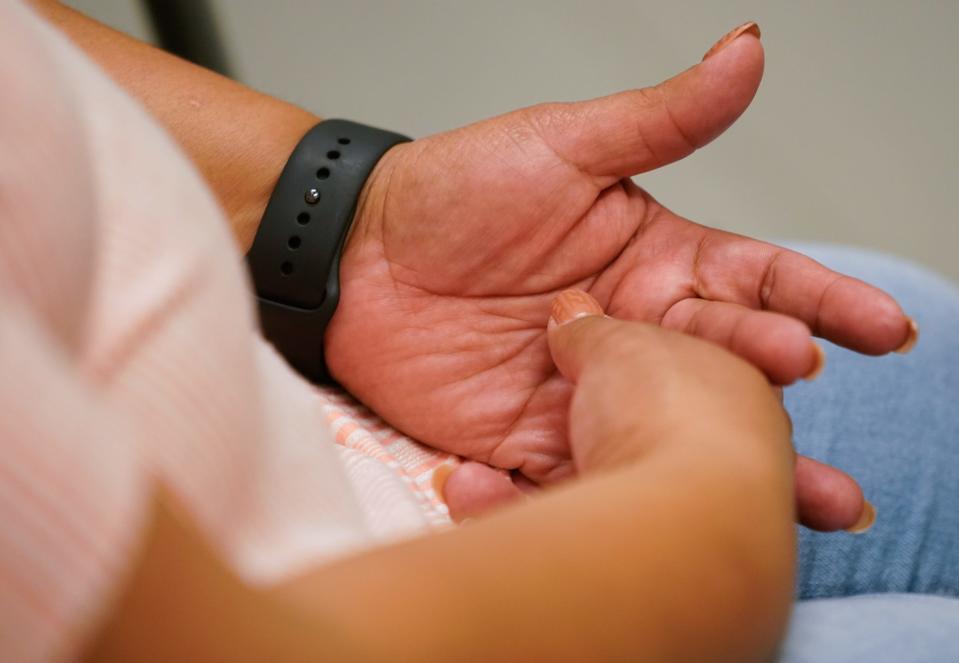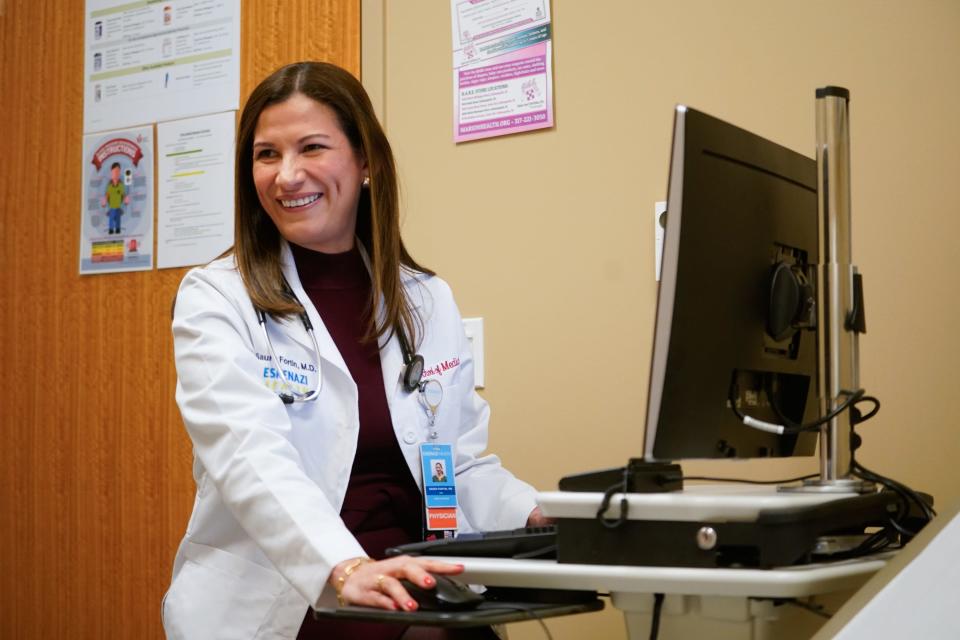The urgent care boom: a lifeline for Indiana as doctor shortage rages

As an Eskenazi Health provider who staffs the urgent care clinic, Dr. Saura Fortin Erazo typically sees patients with seasonal flu and other respiratory viruses, infections, and cuts and bruises. But she also regularly has people come in for mental health crises. Others may need primary care or to see a specialist. Occasionally Fortin's urgent care patients need to be admitted to the hospital.
Urgent care use has expanded rapidly in the last decade, becoming a imperfect catch-all for all kinds of services amid shortages across health care professions, ranging from primary care to cardiology, pulmonology and oncology and mental health.
"One of our philosophies is there's no wrong door, whether it's primary care or emergencies or mental health," Fortin Erazo said.
From 2016 to 2022, the number of urgent cares almost doubled in the United States, rising from about 8,600 to more than 14,000 in 2022, according to the Urgent Care Association. In Indiana that number increased from 202 in 2018 to 261 in 2022, according to the organization.
To adapt to the increased demand for urgent care, Eskenazi Health has turned all its clinics into hybrid centers that offer urgent care, primary care, specialty care as well as mental health care.
Beyond the shortages driving people to urgent cares, the increase also stems from changing habits where people want immediate relief for health issues that previously might have required at least a few days wait for an appointment with their doctor.
"We use to have to wait for TV shows, now we don't wait," said Urgent Care Association CEO Lou Ellen Horwitz, referring to 'binge-watching' entire seasons instead of waiting for episodes to come out week by week. "We expect the same of health care."

A lifeline for rural America
Urgent care clinics can also fill a need in places that lack other providers or hospitals.
Across the country, rural Americans rely on urgent care centers to provide everything from routine check ups to emergency care as hospitals in those regions close. The American Hospital Association tracked 136 rural hospitals closing between 2010 and 2021, including 19 in 2020.
During the summer, Franciscan Health opened an urgent care in Crawfordsville —a city of some 16,000 people in a rural stretch of central Indiana.
In recent years, Ascension closed nearly two dozen primary and walk-in urgent care centers across Indiana, including one in Crawfordsville. That left the city without any after-hours medical care other than the emergency room.
"They're more limited on primary care and access to medical care, and so we saw the need for the community there," said Britney Zimmer, the administrative director of occupational health for Franciscan.
Franciscan is paying attention to regions where health care is in short supply, she said.
"If there's a lack of primary care or challenge getting in, we're serving as the overflow," Zimmer said.
In Crawfordsville, the community raised the alarm that yet more health care was moving out of the city. Mayor Todd Barton told the IndyStar in March that Crawfordsville was already seeing providers leave and worried about a becoming a primary care "desert."
Franciscan providers are encouraging rural patients far outside the Crawfordsville area who have to decide between driving hours for a visit or going without to use their online option.
"As you get out in rural areas, it's hard to get health care on demand," Zimmer said. "We've added a virtual platform to give people who live farther away access."
However, virtual visits can't accommodate health conditions that require in-person examinations. Audio and video glitches that can occur over the internet can frustrate patients and providers alike.
Some urgent care centers have increased the severity of cases they can handle to make up for the lack of emergency room access, Horwitz said.

Making the right decisions
Franciscan Health's emergency rooms routinely see cases of people with sinus infections, allergies, muscle aches and pains and flu symptoms, clogging up the lobby for life-threatening cases. Occasionally, those severe cases end up at urgent care instead.
It's not always easy to discern where to go when you're sick or injured, local health providers say.
Urgent cares can handle most common illnesses, like colds, flu, viruses and injuries, such as cuts and sprains. While some centers have more medical capabilities than others, the general rule of thumb is to visit the emergency room for anything that could be life threatening.
That includes chest pains, loss of consciousness, slurred speech, and serious burns. Sometimes minutes matter with serious cases.
If patients are unsure if their symptoms are serious enough for the emergency room, they can often call their primary care office for advice, Fortin said.

Urgent care can't replace primary care
Urgent cares gained popularity around the 1980s, founded by physicians who wanted to provide walk-in options for patients with non-emergencies, Horwitz said.
At one point, primary care doctors, concerned about business, discouraged their patients from using urgent care, said Dr. Chris Chao, the president of the College of Urgent Care Medicine.
In recent years, however, primary care doctors have encouraged patients to go to urgent care because there's no room on their schedules.
"The downsides are that the lines have blurred between primary care and urgent care," he said. "Certain medical services and conditions need consistency and need a medical home."
Patients with chronic and complicated conditions need a doctor who knows their history to treat issues as they develop, Chao said.
With urgent care, each visit typically is unconnected to the previous ones.
Despite those drawbacks, the convenience of urgent care continues to draw more and more patients.
"We're a victim of our own success," Chao said. "We offer walk-in appointments and we never turn anyone away."
Binghui Huang can be reached at 317-385-1595 and Bhuang@gannett.com.
This article originally appeared on Indianapolis Star: Urgent care becomes catch-all service as doctor shortage rages

